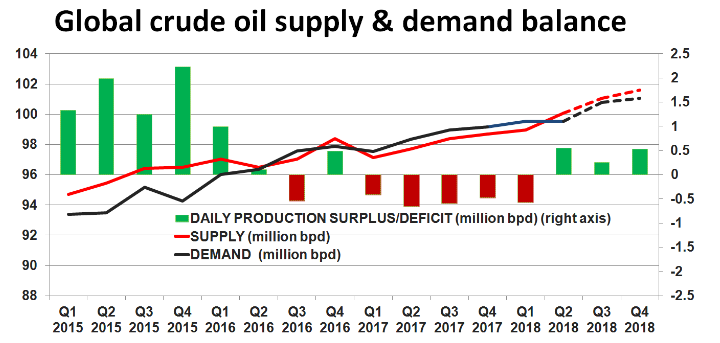Oil prices eased on Monday after rallying at the end of last week, but tensions between Saudi Arabia and Iran helped limit losses.
Prices had climbed on Friday after Saudi Crown Prince Mohammed bin Salman said the kingdom would develop nuclear weapons if arch-rival Iran did.
Petromatrix analyst Olivier Jakob said prices were “really giving back some of Friday’s short-covering.”
“This week there will be … a pricing of some geopolitical risk with the crown prince going on a visit to the United States which is likely to provide a lot of headlines against Iran and the … deal,” Jakob said, referring to the nuclear pact Iran has with world powers on its nuclear program.
President Donald Trump has told Euroan powers they must “fix the terrible flaws” in the deal or the United States would refuse to extend its sanctions relief on Iran.
Britain, France and Germany have proposed fresh European Union sanctions on Iran over its ballistic missiles program and its role in Syria’s war in a bid to save the pact, Reuters reported.
A rise in U.S. rig counts last week also weighed on prices. U.S. drillers added four oil rigs in the week to March 16, bringing the total count to 800, the weekly Baker Hughes drilling report said on Friday.
“At the current oil price level, drilling activity – and thus output – in the U.S. is likely to increase further,” analysts at Commerzbank said in a note.

The U.S. rig count, an early indicator of future output, is much higher than a year ago as energy firms have boosted spending.
Thanks to high drilling activity, U.S. crude oil production C-OUT-T-EIA has risen by more than a fifth since mid-2016, to 10.38 million barrels per day (bpd), pushing it past top exporter Saudi Arabia.
Soaring U.S. output and rising production in Canada and Brazil are undermining efforts led by the Organization of the Petroleum Exporting Countries and Russia to curb supplies and bolster prices.
Source: Reuters














